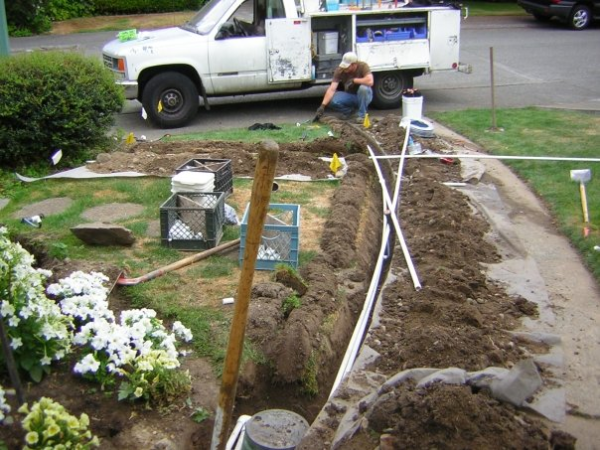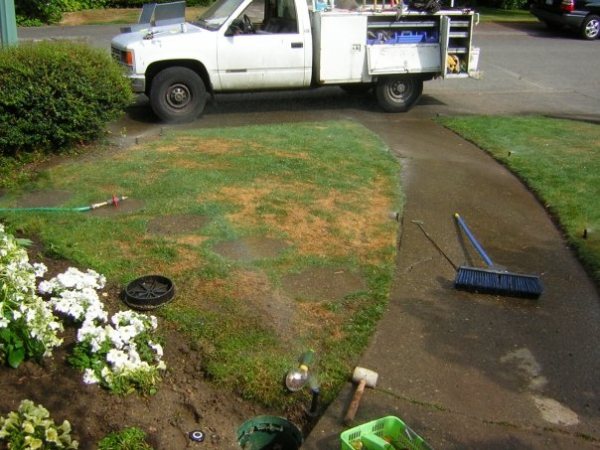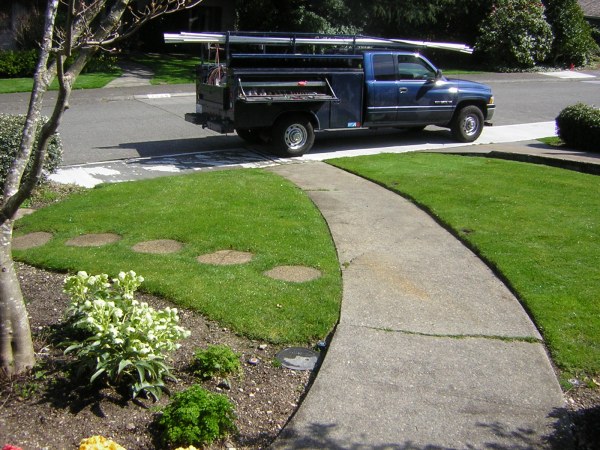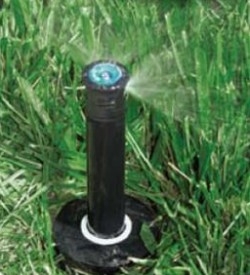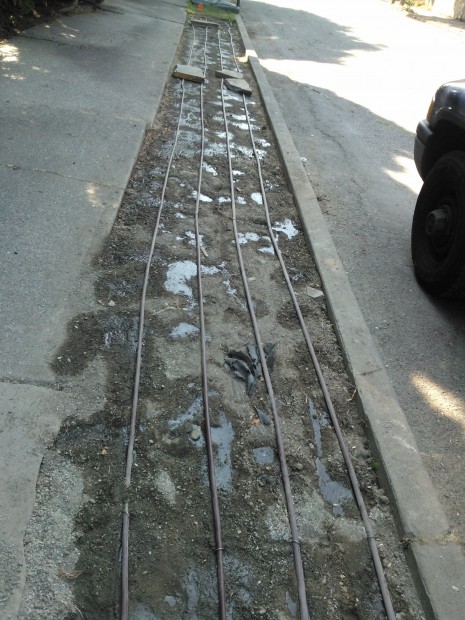There are a few ways to fix a poorly functioning zone. We want to check a few things first. I’ve spent hours troubleshooting a low pressure zone only to discover the main water meter at the curb wasn’t open all the way. The last person using the meter opened it enough for household fixtures to work, but a sprinkler system requires a lot more flow.
If we know our main supply is wide open and there aren’t any hidden mysteries we check the pipe sizes and total gallons per minute the zone is putting out. Usually you can see the pipe’s size from the valve box, and you measure the flow (GPM) at the water meter. Most meters measure cubic feet, so memorize this: 1 cubic foot = 7.48 gallons. If your problem zone is over 15 gpm (two full revolutions of the cubit foot dial in one minute) and the supply out of control valve is 1″ you can bet it’s overdesigned. You can look at a friction loss chart, and when the gallonage exceeds five feet per second velocity, you’re in trouble.
Most of the time we find the zone was overdesigned, too many heads were added, or the nozzles used are high gallonage. Old heads with worn seals or that are brass pop ups without wiper seals waste water with blow by- water gushing around the riser because it won’t pop up all the way.
Once we’ve narrowed the problem down there are basically three options. Split the zone, re-nozzle with lower gallonage nozzles, or convert to drip.
Splitting the zone requires more time, money, and labor- but often yields the best result. It involves adding another valve into the mainline, running a new wire to the controller if no spare is available, and a bunch of digging to find the best separation point in the zone. So basically we cap off one branch, tie into the other half with a new supply and make two zones out of one.
Some people suffer a great deal of anxiety when they see their yard all dug up. I, on the other hand, have a great deal of fun. What little boy isn’t in heaven playing in the dirt, building stuff? Do little boys even play in the dirt anymore? At any rate, after many years of playing in yards, we’ve gotten darn good and putting it back together and cleaning it up. Before:
..and one year and one new truck later:
As for the other option of re-nozzling, there are two nozzle types I like that are low-gallonage and work well. One type is the Toro Precision series. They have the same radii, but use about a third less water than most spray nozzles. Its hard to believe these actually work well because their droplets are so fine and hard to see sometimes. You kinda have to get down low and look at a certain angle to see the spray pattern. I worry that their openings are so small they will get easily clogged, but I haven’t had too much trouble with them yet.
The other low gallon option is the MP Rotator. I’ve learned that their only drawback is you need at least 40 psi operating pressure for them to perform well. They use about half as much water as the same radius spray nozzle, but if you can’t achieve 40 psi, they stink. Customers love this nozzle and it’s calming mesmerizing stream rotation. They just kind of stand there for a moment, eyes glazing over, while I’m picking up my tools and putting things away.
Conversion to drip is a good idea in shrub beds with established perennials. Netafim works great, is low volume, and operates at as low as 15 psi. I wouldn’t recommend it under turf, ( because I’ve really never tried it, and have heard horror stories of stripey grass. ) and I wouldn’t recommend it in flower beds or gardens where you’re digging things up all the time. It’s easily repaired if cut, buy annoying if that’s what you spend all your time doing. It’s great for the ornamental stuff where it’s just left alone to do it’s thing.
Call your sprinkler guy to determine which option is best for your particular system. Keep in mind the older your system, the more costly the fix, and more limited in options you’ll be. It’s exactly like owning a car. Restoring a 1968 Chevy Nova II can be a rewarding hobby. If your system is from the ’60’s, there’s nothing glamorous or Mad Men about it. You’ll just drive your sprinkler man mad.




